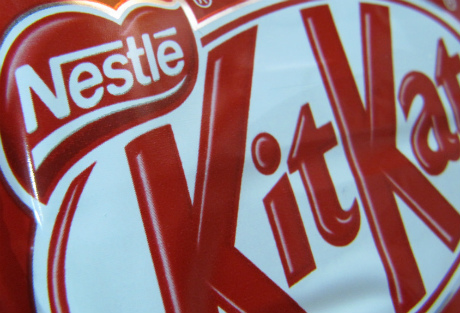Commercial Insights

It might sound like a tasty little case, but as Nestle has found out, there’s very little sweet about the trademarking battle that they’ve been having out with major rivals Cadbury over the distinctive shape of a Kit-Kat. AllAboutLaw investigated further.
Mondelez, Cadbury’s US owners, and Nestle, are into the latter rounds of what has become a slugfest of a boxing contest, over the shape of the Kit-Kat chocolate bar. Although the judges scorecards are close, it looks like Mondelez will have the bout in the bag if Nestle can’t find a knockout blow very soon.
The latest decision came in the UK, after already slugging out this trademarking case across Europe. Nestle want to trademark the shape of the bar, and Cadburys say that it’s not distinctive enough to warrant a trademark, which would conveniently free up the space for Cadbury’s to release their own version of the Kit-Kat.
You can probably already see the problem here, and why this is a case that just won’t go away.
However, the latest battle has gone the way of Cadbury’s, when the court of appeal made it’s decision that the Kit-Kat’s four-finger design was not by itself, worthy of being trademarked and was simply a shape.
It’s taken months of deliberation, and the paper that the judges released their verdict in was over 16,000 words long, but Lord Justice Kitchin claimed that the shape of the chocolate bar was not qualified to be “a badge of origin” and concluded by stating that “we are concerned here with ... the three-dimensional shape of a chocolate product, that has no inherent distinctiveness”.
This appeal was on the back of a similar ruling from the UK high court which took place in January 2016, which had already stifled Nestle’s attempt at trademarking the design. And that followed a previous ruling in the same way from the European Court of Justice, who again found that the shape was not distinctive enough on it’s own to be worthy of the trademark tag.
Mishcon de Reya’s IP lawyer, Sally Britton, stated that: : "Non-traditional trade mark registrations covering shapes, sounds, colours and smells are becoming increasingly popular as brands look to experiences to drive brand value. The Court of Appeal has today handed down its decision in one of several disputes between Nestlé and Cadbury relating to Nestlé's attempts to trademark the shape of its four-finger bar.
“The court's decision sets a high bar for the registration of shape marks. This case is interesting as it examines the type of use and consumer recognition required to obtain monopoly protection over a shape mark. Businesses seeking to protect non-traditional trade marks such as shapes or packaging will need to provide evidence that consumers are relying on that trademark to identify the origin of the product."
However, Nestle does not appear to want to give up on this one, as you might expect from a company that has spent more than £50 million advertising its product across the UK from 1996 to 2007, and that was worth 40 million sales across Britain in 2010 alone.
“Nestlé is disappointed by the court of appeal judgment and is considering its next steps,” said a company spokesperson. “KitKat is much loved around the world and its four-finger shape is well known by consumers. Nestlé’s four-finger shape has been granted trademark registration in many countries of the world, for instance Germany, France, Australia, South Africa and Canada, further protecting it from imitations.”
Following the appeal ruling, a Mondel?z spokesman said: “As we have previously stated, we do not believe the shape of the KitKat bar should be protected as a trademark in the UK.”
What will particularly rankle for Nestle though, is that these ‘shape marks’ have a precedent already in the UK and that Mondelez own one of them. Their distinctive triangular zigzag Toblerone shape has successfully been granted a trademark because it’s completely distinctive to the idea of the Toblerone.
Whilst the judges agreed that the Kit-Kat shape is “very well known” as part of that chocolate, they stated that it “does not necessarily mean that the public have come to perceive the shape as a badge of origin such that they would rely upon it alone to identify the product as coming from a particular source.
“They might simply regard the shape as a characteristic of products of that kind or they might find it brings to mind the product and brand name with which they have become familiar.
“These kinds of recognition and association do not amount to distinctiveness for trademark purposes.”
The judges also considered advertisements in its ruling, stating that because Nestle doesn't use the shape as part of their direct advertising campaigns, “it has nothing, therefore, to do with the informed choices that consumers make between similar products.”
There are rumours that after the judges made a comment about Nestle’s arguments being ‘wafer-thin’, the Nestle lawyers told them to ‘have a break’. These reports are, however, very much unconfirmed.
Academy tools to help you get a job
-

Free Watson Glaser Practice Test
Understand the test format, compare your performance with others, and boost your critical thinking skills.

